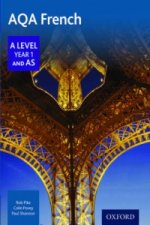
Code: 08251060
Performance of Imaging Laser Radar in Rain and Fog
by Kathleen M Campbell
The Air Force is currently developing imaging laser radar systems (ladar) for use on precision guided munitions and other imaging systems. Scientists at Eglin Air Force Base, in conjunction with Wright Laboratories, are testing a ... more
- Language:
 English
English - Binding: Paperback
- Number of pages: 122
Publisher: Biblioscholar, 2012
- More about this

You might also like
-

Description of the Villa of Mr. Horace Walpole, ... at Strawberry-Hill Near Twickenham, Middlesex. with an Inventory of the Furniture, Pictures, Curio
23.40 € -

Modern Character, Introduc'd in the Scenes of Vanbrugh's sop. as It Was Acted at a Late Private Representation of Henry the Fourth, Perform'd Gratis
13.71 € -18 % -

Into the Shadow
20.57 € -2 % -

In Quest For Life Ave Pax
35 € -1 % -

Your Intelligence Makeover
19.97 € -12 %
Give this book as a present today
- Order book and choose Gift Order.
- We will send you book gift voucher at once. You can give it out to anyone.
- Book will be send to donee, nothing more to care about.
More about Performance of Imaging Laser Radar in Rain and Fog
You get 150 loyalty points
 Book synopsis
Book synopsis
The Air Force is currently developing imaging laser radar systems (ladar) for use on precision guided munitions and other imaging systems. Scientists at Eglin Air Force Base, in conjunction with Wright Laboratories, are testing a 1.06-?m wavelength ladar system and need to understand the weather effects on the ladar images. As the laser beam propagates through the atmosphere, fog droplets and raindrops can cause image degradation, and these image degradations are manifested as either dropouts or false returns. An analysis of the dropouts and false returns helped to quantify the performance of the system in adverse weather conditions. Statistical analysis of the images showed non-linear relationships existed between variables, plus graphical analysis demonstrated the behavior of the dropouts and false returns with changing weather conditions. Statistical control charts identified the weather as a significant influence on the quality of the ladar images. By focusing on the false return data, a study of mean free path and the survival equation was accomplished. The mean free path was derived from the rainfall rate, and this mean free path was used in the survival equation to calculate an expected number of false returns for an image. This work led to the hypothesis that raindrops with a diameter of 3.0 mm and larger were causing the false returns seen in the images. However, further analysis revealed that a 3.0-mm raindrop was not capable of scattering enough energy to be detected by the system. It was then hypothesized that the system detector was also picking up solar spectrum energy scattered by raindrops, and that this detector was unable to distinguish between solar energy and laser energy scattered by raindrops.
 Book details
Book details
Book category Knihy po anglicky Society & social sciences Education
59.92 €
- Full title: Performance of Imaging Laser Radar in Rain and Fog
- Author: Kathleen M Campbell
- Language:
 English
English - Binding: Paperback
- Number of pages: 122
- EAN: 9781288414864
- ISBN: 9781288414864
- ID: 08251060
- Publisher: Biblioscholar
- Weight: 231 g
- Dimensions: 246 × 189 × 7 mm
- Date of publishing: 07. December 2012
Trending among others
-

Cambridge IGCSE (R) & O Level Complete Physics: Student Book Fourth Edition
42.06 € -

Cambridge IGCSE (R) & O Level Complete Biology: Student Book Fourth Edition
42.06 € -

Cambridge IGCSE (R) & O Level Complete Chemistry: Student Book Fourth Edition
51.04 € -

Oxford IB Diploma Programme: IB Theory of Knowledge Course Book
58.01 € -

Oxford International Primary Science Second Edition: Workbook 4
15.02 € -

Business Partner B1 Workbook
17.65 € -7 % -

CompTIA Security+ Review Guide - Exam SY0-601
24.71 € -24 % -

KS3 Maths 10-Minute Weekly Workouts - Year 8
8.06 € -8 % -

The End of Education
13.51 € -25 % -

English for Nurses Pre-Intermediate Level Book 1
10.89 € -

Oxford IB Diploma Programme: IB Economics Course Book
62.34 € -

Cambridge IGCSE (R) & O Level Complete Biology: Print and Enhanced Online Student Book Pack Fourth Edition
61.23 € -

geog.2 Workbook
11.49 € -6 % -

Oxford IB Study Guides: Economics for the IB Diploma
47.71 € -

Teach Reading With Orton-gillingham
18.76 € -10 % -

KS3 Maths 10-Minute Weekly Workouts - Year 7
8.06 € -8 % -

Blue Book of Grammar and Punctuation: An Easy- to-Use Guide with Clear Rules, Real-World Examples , and Reproducible Quizzes, Twelfth Edition
15.12 € -28 % -

Business Partner B1+ Workbook
16.84 € -3 % -

Powerful Teaching: Unleash the Science of Learning
26.22 € -26 % -

Business Partner B2 Workbook
16.84 € -3 % -

Embodied Teen
21.68 € -16 % -

(ISC) SSCP SG & SSCP Practice Test Kit, 3e
65.17 € -28 % -

Growth Mindset Classroom-ready Resource Book
16.23 € -28 % -

AQA A Level Biology Revision Guide
25.62 € -5 % -

Oxford International Primary Maths Second Edition: Practice Book 1
12.20 € -

Oxford International Primary Science Second Edition: Student Book 1
26.83 € -

Donny's Unauthorized Technical Guide to Harley Davidson 1936 to Present
48.02 € -16 % -

OET Speaking for Nurses Book 2
11.59 € -2 % -

Oxford International Primary Maths Second Edition: Practice Book 2
12.20 € -

Cambridge IGCSE (R) & O Level Complete Physics: Print and Enhanced Online Student Book Pack Fourth Edition
63.05 € -

Edexcel International GCSE Chemistry Student Book Second Edition
31.67 € -14 % -

Walk Your Talk; Tools and Theories To Share Nonviolent Communication
29.35 € -

OET Speaking For Nurses Book 1
12.80 € -

Oxford International Primary Maths Second Edition: Practice Book 3
13.61 € -

Social Skills Activities for Secondary Students wi th Special Needs, Third Edition
26.43 € -21 % -

New KS2 English Year 5 Foundation Grammar, Punctuation & Spelling Targeted Question Book w/Answers
8.97 € -5 % -

geog.1 5th edition Workbook Answer Book
56.49 € -

AQA GCSE German Foundation Practice Papers
15.33 € -

AQA French A Level Year 1 and AS
50.44 € -

Making Escape Rooms for Educational Purposes
18.76 € -

Cambridge IGCSE (R) & O Level Complete Chemistry: Print and Enhanced Online Student Book Pack Fourth Edition
63.05 € -

New KS2 English Year 4 Foundation Grammar, Punctuation & Spelling Targeted Question Book w/Answers
8.97 € -5 % -

240 Vocabulary Words Kids Need to Know: Grade 3
11.80 € -17 % -

Oxford IB Diploma Programme: Oxford IB Diploma Programme: IB Mathematics: applications and interpretation Standard Level Enhanced Online Course Book
95.34 € -

Education in the New Age
12.90 € -

Oxford International Primary Maths Second Edition: Practice Book 5
16.13 € -

OET Preparation
9.68 € -

Speed and Accuracy: Multiplication
8.57 € -

ESL/ELL Teacher's Survival Guide: Ready-to-Use Strategies, Tools, and Activities for Teaching En glish Language Learners of All Levels, 2nd Edition
29.75 € -21 %
Osobný odber Bratislava a 2642 dalších
Copyright ©2008-24 najlacnejsie-knihy.sk Všetky práva vyhradenéSúkromieCookies



 21 miliónov titulov
21 miliónov titulov Vrátenie do mesiaca
Vrátenie do mesiaca 02/210 210 99 (8-15.30h)
02/210 210 99 (8-15.30h)